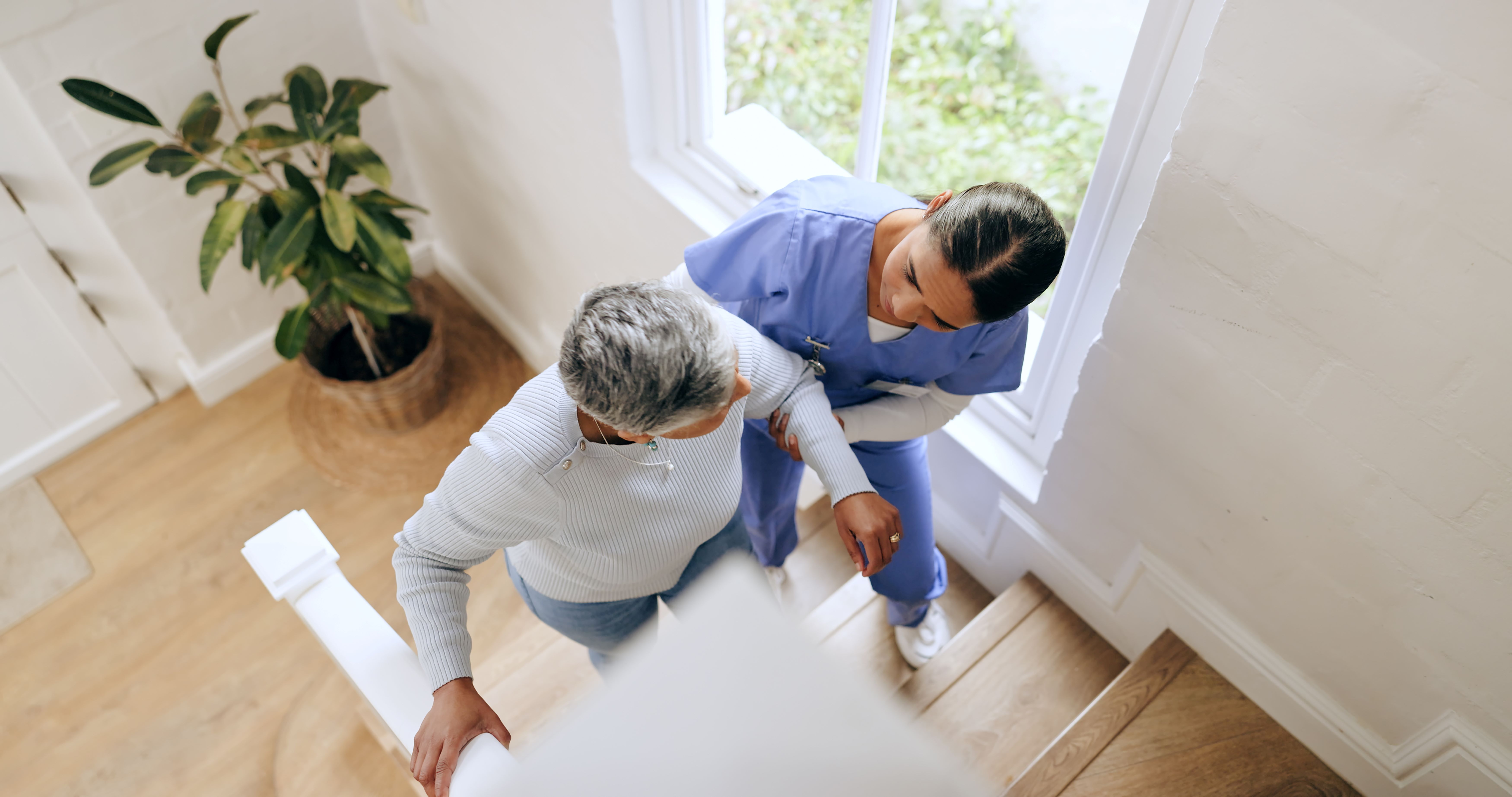
10 Essential Home Safety Tips for Seniors
Creating a safe living environment is crucial for seniors who choose to age in place, as it supports their independence while reducing the risk of accidents. Implementing safety measures in the home helps prevent falls, reduce hazards, and ensure that seniors can enjoy comfort without compromising their well-being. Whether you’re helping with home safety for elderly parents or seeking ways to improve safety for an elderly family member, here are ten essential home safety tips.
Check out this article on 4 Common Misconceptions About Elder Care to learn more about misconceptions and how understanding the reality of elder care can help you create a safe environment for your loved ones.
1. Prevent Falls with Clutter-Free Spaces
Falls are one of the most common causes of injury among seniors. Keep living spaces clear of obstacles, such as rugs, loose cords, and clutter that can cause tripping. Regularly tidying up, especially in high-traffic areas, is one of the simplest ways to make the home safer. Additionally, adding non-slip mats in areas like the kitchen and bathroom can further reduce fall risk.
2. Improve Lighting in Every Room
A well-lit home is a safer home for seniors. Make sure all rooms, hallways, and staircases have sufficient lighting to prevent tripping or missteps. Consider adding nightlights in hallways and bathrooms to provide better visibility at night. Seniors may also benefit from motion-activated lighting, especially in entryways, as it allows them to navigate without fumbling for a light switch.
3. Install Grab Bars and Handrails
Handrails and grab bars provide critical support in bathrooms, along staircases, and in other areas where seniors may need stability. Properly installed grab bars near toilets, showers, and bathtubs help prevent slips and falls. Handrails on both sides of staircases can also provide a safer way for seniors to go up and down stairs independently.
4. Keep Emergency Numbers Accessible
In case of emergency, having contact numbers nearby can make a significant difference. Post emergency numbers, including those for family, local emergency services, and nearby caregivers, in an easily visible location. Whether you’re coordinating in-home senior care or senior care services near you, this simple step can ensure that help is readily accessible when it’s needed most.
5. Invest in Fire Safety Measures
Fire safety is essential for elderly safety at home. Make sure there are functioning smoke detectors in every room, and test them regularly. Fire extinguishers should be readily accessible, especially in high-risk areas like the kitchen. It’s also wise to create a simple fire evacuation plan that everyone in the household understands.
6. Prevent Carbon Monoxide Poisoning
Carbon monoxide poisoning is a hidden danger that can be fatal. Install carbon monoxide detectors, especially if your home uses gas or has a fireplace. Regularly check these detectors to ensure they are working properly. Having them installed alongside smoke alarms offers peace of mind for both the senior and their family members.
7. Practice Medication Safety
Many seniors take multiple medications daily, making it essential to have a safe and organized system for medication management. Consider a pill organizer to prevent mix-ups, and always keep medications in their original containers. If in-home caregivers are assisting with medication management, ensure they follow prescribed dosages precisely to avoid potential issues.
8. Use Non-Slip Mats and Rugs
Bathrooms and kitchens are prone to slippery surfaces, which can pose a significant fall risk. Place non-slip mats in these areas to reduce the chances of slipping. Avoid using loose rugs in areas where seniors walk frequently, as they can easily become tripping hazards. Non-slip mats provide added safety in frequently used areas, particularly near sinks, showers, and bathtubs.
9. Create a Safe Bathroom Setup
Bathrooms are a common area for falls and accidents. Besides grab bars and non-slip mats, ensure the bathroom is equipped with a shower seat for added stability. Seniors with limited mobility may also benefit from handheld showerheads. Making these modifications can enhance safety for those who require extra support.
10. Maintain Easy Access to Phones
Keep phones within easy reach in case of an emergency, especially in rooms where the senior spends most of their time, such as the living room or bedroom. Some seniors may also benefit from wearing emergency call devices, especially if they live alone. This access helps ensure that they can call for help whenever necessary, reducing response time in urgent situations.
Closing Thoughts on Home Safety for Seniors
Implementing these essential home safety tips allows seniors to maintain independence in a secure environment. Families seeking affordable in-home care options for seniors or specialized care services for dementia patients often find that combining home modifications with regular caregiver support provides a balanced approach. Making homes safer for seniors offers peace of mind to both seniors and their families, promoting a higher quality of life in a familiar environment.
Taking steps to adapt a home for safety does not need to be costly. From adding simple non-slip mats to investing in in-home senior care, small adjustments can create a significant impact. Whether you’re exploring affordable home care options or looking to establish a safe setup for aging in place, these safety measures are invaluable for creating a supportive environment that caters to seniors’ unique needs.
Resources:
- 10 Essential Home Safety Tips for Seniors – Aliah Home Care
- Home Safety for Older Adults: A Comprehensive Guide 2024 – National Council on Aging
- Tip Sheet: Home Safety Tips for Older Adults – Health in Aging Foundation
- Aging at Home: Essential Tips for Safe Home Care – A Place for Mom
